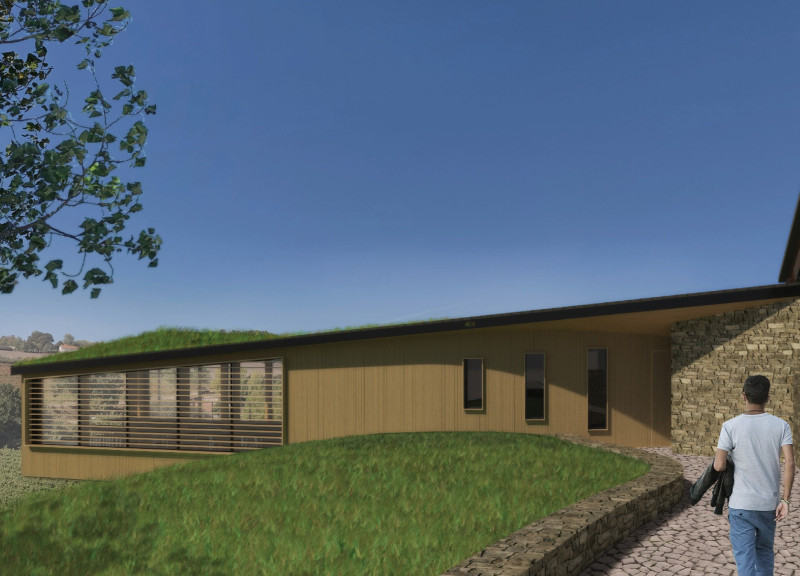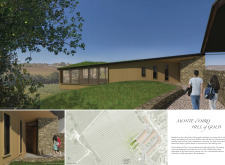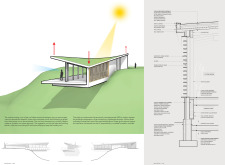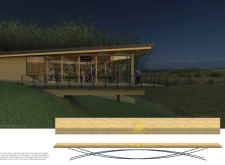5 key facts about this project
Quinta Monte D'Oiro is located in the rolling hills of Portugal and functions as a winery that offers visitors a unique experience with its surroundings. The design concept focuses on integrating the building with the landscape, allowing the architecture to reflect the natural contours while meeting the needs of both winemaking and wine tasting.
Architectural Form
The building has a curved shape that mimics the gentle hills of the area. Visitors enter from the east through a path lined with trees and cobblestones, leading gently downhill to the tasting room. This path not only guides people visually but also represents the journey of grapes as they move from the vineyard to the final tasting.
Spatial Transitions
Inside the building, there is a gently sloping stone hallway that opens into a timber-framed area with large glass windows. These windows can slide open, extending the indoor space to the terrace and enhancing the connection to the outside. This design invites nature into the experience, reflecting the winery's aim to engage visitors with the landscape.
Sustainable Features
Sustainability is highlighted through the green roof, which features vegetation that helps the building blend in with its setting. This aspect also improves thermal comfort, helping to keep the interior temperature stable. The construction uses structurally insulated panels to support energy efficiency, ensuring that the winery remains comfortable throughout the year.
Material and Structure
The structure is supported by glulam posts and beams, which provide stability and also add to the visual appeal of the design. Choosing these materials highlights the relationship between the building's form and its function, ensuring durability while enhancing the overall experience for visitors.
The terrace allows for expansive views of the vineyards and hills, encouraging visitors to take in the serene landscape while enjoying a glass of wine. The table design captures this experience, featuring a brass inlay that reflects the setting sun, creating a tangible connection to the natural beauty that surrounds the winery.





















































